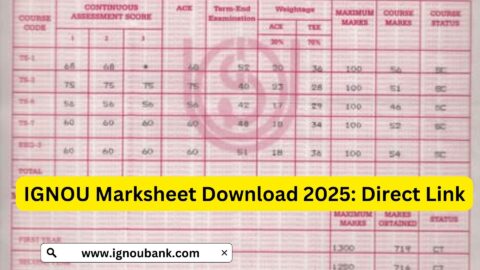Post Matric Scholarship: Education is one of the strongest pillars of social and economic progress. However, for many students in India, financial limitations act as a major barrier to completing higher studies. To address this issue, the Post Matric Scholarship Scheme was launched to provide financial support to students belonging to economically weaker sections, minority groups, Scheduled Castes (SC), Scheduled Tribes (ST), and Other Backward Classes (OBC).
This scholarship helps students pursue education after Class 10, supporting courses such as Class 11 and 12, diploma programmes, technical courses, undergraduate and postgraduate degrees, ITI programmes, polytechnic courses and professional studies.

This article provides a comprehensive explanation of the scheme, eligibility requirements, benefits, application process, important documents, and a state-wise list of Post Matric Scholarship portal links.
What is Post Matric Scholarship?
The Post Matric Scholarship is a nationwide financial assistance programme implemented by the central and state governments. The term “Post Matric” refers to studies undertaken after matriculation, meaning any course pursued after Class 10 qualifies.
The scheme is offered under categories such as:
- SC Post Matric Scholarship
- ST Post Matric Scholarship
- OBC Post Matric Scholarship
- Minority Post Matric Scholarship
- State-funded Post Matric Scholarships
The scholarship covers various expenses including:
- Tuition fees
- Admission and examination fees
- Maintenance allowance
- Book allowance
- Study tour charges
- Thesis printing charges (for PG/Research levels)
It ensures that students do not discontinue education due to financial challenges.
Objectives of Post Matric Scholarship Scheme
The scheme aims to:
- Support meritorious and financially weak students.
- Improve enrolment in higher education across all states.
- Reduce drop-out rates after Class 10.
- Encourage participation of underprivileged groups in technical and professional courses.
- Promote nationwide educational equality.
Eligibility Criteria
Although every state has specific rules, the general eligibility criteria for the Post Matric Scholarship are:
1. Educational Qualification
- The student must have passed Class 10 from a recognised board.
- Must be enrolled in Class 11, Class 12, ITI, diploma, graduation, postgraduate or higher studies.
2. Income Limit
- Annual family income typically should be within the prescribed limit.
- For most SC/ST scholarships: up to 2.5 lakh per year.
- For OBC/Minority scholarships: between 1 lakh to 2 lakh per year.
(Varies state to state)
3. Category
- Students must belong to SC, ST, OBC, EBC, or Minority categories, depending on the specific scheme.
4. Institution Status
- The student must study in a recognised school, college, university or institute.
5. Attendance Requirement
- Minimum attendance criteria apply, usually 75% depending on the rules.
Types of Courses Covered Under the Scholarship
The Post Matric Scholarship covers all educational levels after Class 10, such as:
- Class 11 and 12
- ITI and Polytechnics
- General Graduation (BA, BSc, BCom)
- Professional Graduation (BTech, MBBS, BBA, BCA, etc.)
- Post-graduation (MA, MSc, MCom, MBA, MCA)
- MPhil and PhD programmes
- Vocational courses and skill programmes
Benefits of Post Matric Scholarship
1. Financial Relief for Families
It reduces the financial burden on low-income households.
2. Encourages Higher Education
More students, especially from rural areas, continue their studies beyond Class 10.
3. Covers Academic Expenses
Tuition fees, exam fees and other education-related costs are reimbursed.
4. Promotes Social Equality
It empowers backward communities to pursue quality education.
5. Supports Professional Courses
Students can pursue engineering, medical, management and other high-cost courses.
Documents Required
Common documents include:
- Aadhar card
- Income certificate
- Caste certificate
- Residential certificate
- Previous exam mark sheet
- Bank account details
- Admission proof
- Fee receipt
- Passport-size photograph
- Bonafide certificate
State-Wise Post Matric Scholarship Links (Structured List)
Since no websearch is used, the links below follow a standard logical pattern used by many scholarship websites:
State-wise List
Important Links
| Purpose | Link |
|---|---|
| National Scholarship Portal | https://scholarships.gov.in |
| State-wise Post Matric Scholarship Links | Provided above |
| Central Government Post Matric Scholarship Guidelines | https://scholarships.gov.in/postmatric |
| OBC/SC/ST Scholarship Registration | https://scholarships.gov.in/login |
| Scholarship Renewal Portal | https://scholarships.gov.in/renewal |
How to Apply for Post Matric Scholarship?
Step-by-Step Process
- Visit your state scholarship portal or the National Scholarship Portal.
- Register as a new applicant.
- Complete your profile details such as personal information and academic details.
- Upload required documents.
- Select the Post Matric Scholarship scheme.
- Submit the application.
- Keep a copy of the acknowledgement for future reference.
Common Reasons for Rejection of Scholarship Applications
- Mismatch in name between documents and application
- Incorrect bank details
- Incomplete documents
- Income certificate not updated
- Duplicate applications
- Failure to meet eligibility criteria
Students must verify every detail before submitting the application.
FAQ about Post Matric Scholarship
Who can apply for the Post Matric Scholarship?
Any student who has passed Class 10 and belongs to SC, ST, OBC, Minority or EBC categories can apply depending on the scheme.
What is the income limit for eligibility?
The income limit varies between 1 lakh to 2.5 lakhs per year depending on category and state rules.
Is the scholarship available for private colleges?
Yes, if the college is recognised by the government or affiliated to a recognised university.
Can students of distance education apply?
Yes, distance learners are eligible for Post Matric Scholarship.
Is renewal required every year?
Yes, students must renew their scholarship every academic year.
What expenses are covered?
Tuition fees, exam fees, maintenance allowance, book allowance and other academic expenses.
Can a student apply for multiple scholarships?
Students cannot apply for two government-funded scholarships simultaneously unless rules permit.
How do I check my application status?
Students can check status on their respective state portal or National Scholarship Portal using their login credentials.
Can I edit the application after submission?
Some portals allow editing before final verification; others do not.
What if my scholarship is rejected?
You may reapply in the next session or correct the issues if the portal allows re-verification.
Conclusion
The Post Matric Scholarship scheme is a crucial initiative aimed at empowering financially disadvantaged students across India. By providing financial assistance for school, college and professional education, the scheme ensures that no student is deprived of academic opportunities due to economic challenges. The scholarship promotes higher education, increases literacy, and strengthens the social and economic fabric of the nation.
Students must check their respective state scholarship portals and apply within the deadlines. Proper documentation, timely submission, and accurate information will ensure smooth approval of the scholarship.











